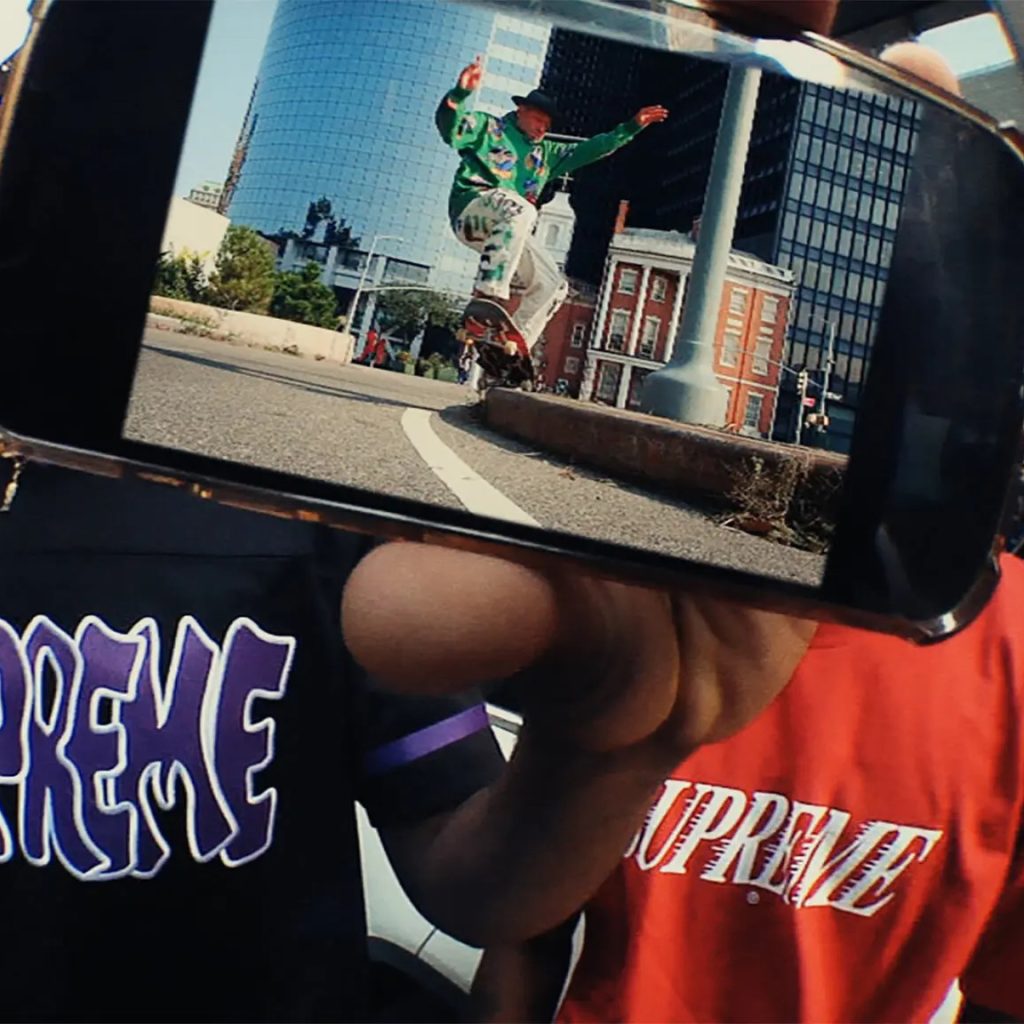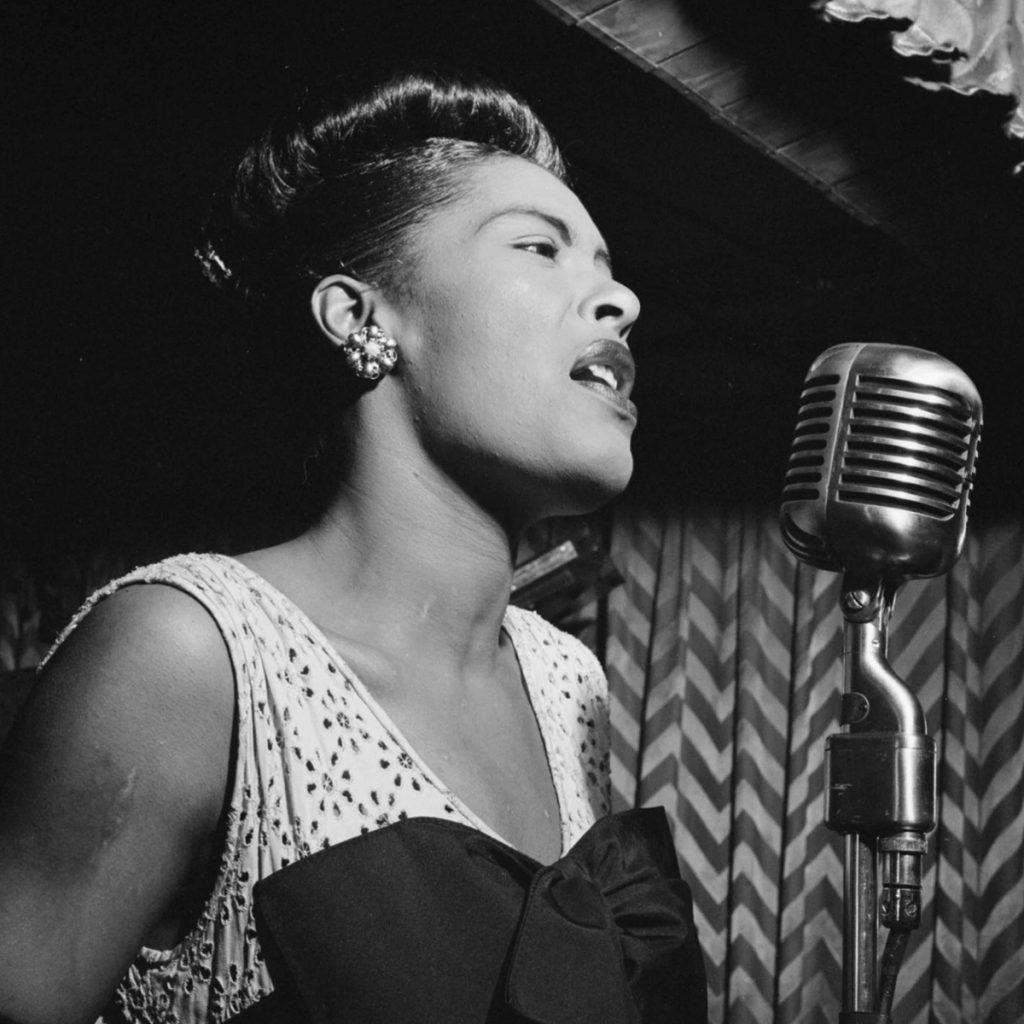Interview: Mark Fox
Our discussion with the NYC via Ohio artist on the influence of puppets, Sunday Mass and a fateful tornado in his acclaimed work

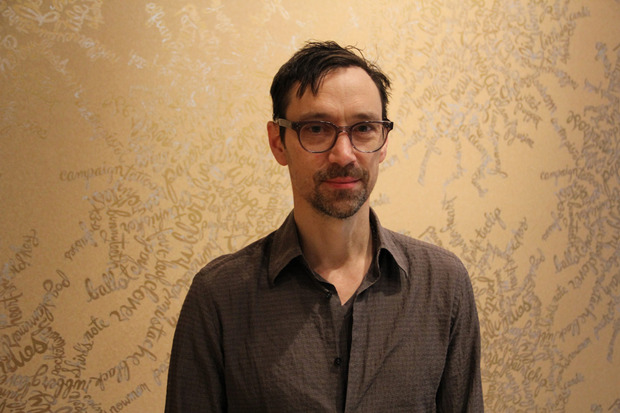
Manipulation is something everybody experiences every day—good or bad, conscious or unconscious. For NYC-based artist Mark Fox, manipulation has permeated his entire body of work and is a theme he continues to explore in his latest exhibition “MFKPMQ.” The exhibition—which opens today, 16 January 2014, and runs until 22 February at NYC’s Robert Miller Gallery—presents the acclaimed artist’s most developed work to date. Fox first drew CH’s attention with his meticulous wallpaper designs and cover art for The National. To view Fox’s latest work is to see the product of an artist who has explored both a wide range of creative outlets—which includes full scale puppetry theatre—and critically examined his own life, including his religious upbringing in an Ohioan German Catholic community. Fox’s work is deeply personal and at the same time universal. At the gallery before the show’s opening, as his work was being unpacked, Fox spoke with us about his ever-evolving process and core influences.
Your album artwork for The National’s High Violet introduced your work to a much wider audience. Has this been a good thing?
It’s been a blessing of course, I love the band. I have no problem with it—it’s often that the people who know the work are in the art world, and that gets boring. It exposed new people to my work and that’s great.
Your background is almost exclusively in fine arts, yet your work is so multifaceted.
It’s completely varied even though I went to graduate school for painting, then sort of went through the traditional arc of an art student. It seems very dramatic when you look at the work, but I switched from painting and eased into theatre—actually a puppet theatre sort of thing. For 10 years I did puppet theatre, performance-based art with moving objects.
In undergraduate school I was doing these paintings that were very surrealist, darker and less defined. They were coming out of this place of the Ohio landscape, Ohio and German Catholicism. It was very, very dark and heavy and I wasn’t sure quite what I was getting at but they had this really great feel that I loved. Through a process of schooling and study, by the time I got out of graduate school, the paintings had distilled down to color. Figures had completely left the scene. Because of the subject matter, I got interested in medieval art and books and illustrated manuscripts—just the way they used bands of color to illustrate different states of spirituality different realms. So these canvases came out as big color fields, but ultimately I missed story telling.
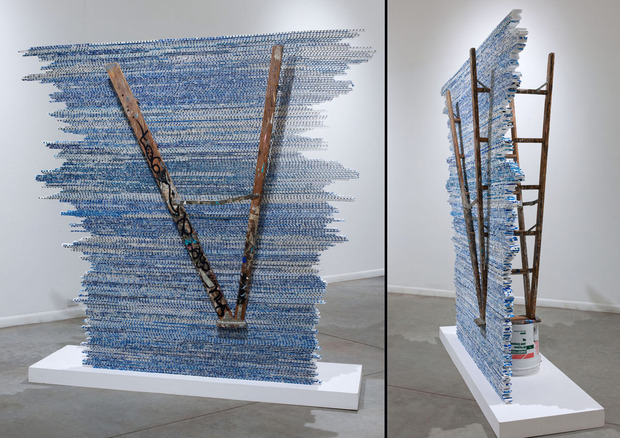
I couldn’t square doing any sort of narrative painting; it didn’t make sense to have a narrative element in something that was still. Why use painting when you can use film? So I started making these paintings that had figures in them again, but you could move them through a series of magnets and strings. I incorporated those into a live performance with some other three dimensional dolls and it snowballed. I created these tabletop performances with paintings and moving stages, that’s all I did. It grew from that to a full staged production with life-sized puppets and figures and live music and lightening designers and spoken text. It was full-scale performance art. I was in heaven. I was in Ohio still and I had a 6,000 square foot studio in an old slaughterhouse, because Cincinatti was an old meatpacking factory basically. I had my own theatre, workshop and painting studio.
Eventually these pieces got so popular. I had started a non-profit organization. It became ongoing, this cycle of raising money. We were traveling from city to city, performing. I become embedded in producing and performing that I was moving further and further away from actually making stuff—what I loved was just the making and directing. I wanted to pare down, so I moved to New York.
From the newer, paper-based work to the puppet work, the themes revolved around manipulation—[like] the themes from my earlier paintings have. So there’s this constant thread.
Your current work calls on various mediums throughout individual pieces and the larger body of work—from painting, to sculpture, to illustration. Is this informed by your days as a performance artist with the puppet theatre?
I think so, yes. The thing about the performance work was, I loved that aspect of it: This combination of different disciplines and bringing together these elements of surprise that wouldn’t necessarily fit together, but making something out of it—was great. That’s something I miss. As opposed to this painting practice which is one piece informs the other, informs the other, and you kind of carry on this language. This was like you’re always throwing something into the mix and I sort of loved that challenge.
With puppets, I was dealing with these themes of manipulation. What I mean by that is how a person or individual is manipulated by forces—whether they’re societal or religious. In my case I chose religious doctrine and the puppet theatre was perfect for that because you had this person manipulating something else so you could really speak to that directly. I started studying puppetry on a very serious level and I found that (I mean, this is a gross generalization) the way different cultures treated objects, in particular the forms of puppetry that came out of different cultures reflected the way that society thought about their deity.
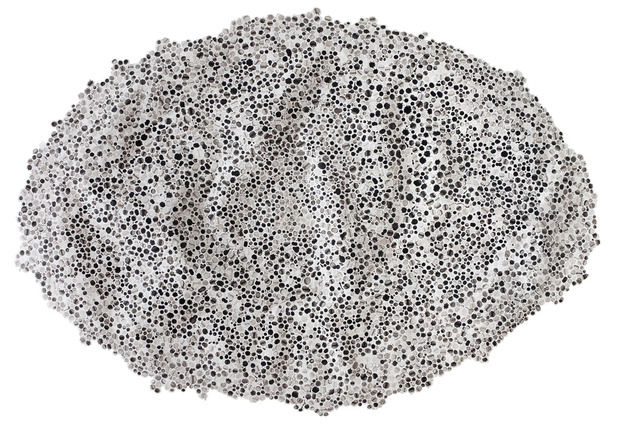
So an example is in the West, the predominate form of puppetry was the marionette, where it was this figure that was manipulated by this unseen force from above by strings. You’re supposed focus on the window and not the big force above. Whereas more in Eastern cultures, the puppeteer was in view. The puppet was next to the manipulator and they were sort of working together to create this narrative. I thought that reflected the way Eastern religions are a sort of dance with the deity as opposed to a separation. So all of the performances were kind of based on those ideas.
When I moved into this more paper-based work I wanted to continue that theme. People would always comment after shows on how beautifully smooth the puppets were manipulated. When I was doing it, I was aware of how I was being manipulated by the puppets, by its limitations. So in the studio, throughout the process of making drawings or paintings, there were these accidents: Splatters, drops, ink stains on pieces of paper, paint splatters. I looked at those and I thought, “These are just as beautiful as anything I’m making.” So I started cutting them out diligently, these “mistakes.” I found that images that had no thought or took no time to make, had me sitting down for hours cutting them out and so I was being manipulated again by the work. The first paper installations were drops, stains and splatters pinned to the wall.
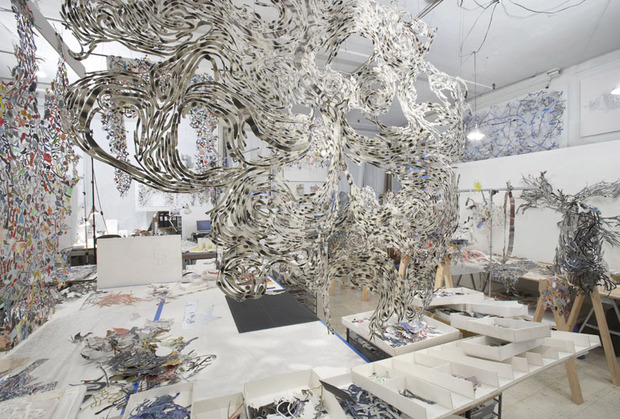
A lot of your work is text-centric. Where does this come from?
The text is, again, drawn from the theme of manipulation. At that point, everything in the studio had become fair game. Once I had decided that accidents and stains were going to be a part of the work, then when I’m on the phone and writing down someone’s number, a place to meet, a shopping list or whatever—all of that I knew would eventually be cut out. So ultimately I began to make these big webs with thousands of cut out little drawings, but what I loved about them was the words. I wanted to do just word-based pieces and I thought, “Why would I choose words?” So I chose words that were text that were meant to manipulate. Things that, going way back to puppet theatre, an individual might be moving through society or moving through life, acting on certain ideas that were instilled into that person without them ever knowing that it was.
So I had to go back to myself. I grew up in this German Catholic family—and community actually. All of this was very serious. I grew thinking virgins could float into heaven as real. So I went back into the actual papal doctrine, the dogma where the Pope is supposed to speak infallibly—it’s the word directly from God. Those are the documents I found. I just painted out the words completely as they are, because I wanted to know what they said. Then I would cut out each word and reassemble them into massive clouds or tree-like forms. So you would have this cloud of words that you could sort of make sense of and know the theme if you spent enough time reading the words, but you wouldn’t be able to read it as a it would come off the page. I felt like that was the sort of thing that was hanging over me as a kid, these grey clouds of, “I don’t know what they say, but I know there’s something in them.”
My process is very monkish in a way. I’m sitting at a table all day hunched over texts. It became like atonement for sins, as if I had to do this labor.
It sounds cathartic.
It is cathartic in some ways, and in some ways it’s reinforcing the ideas. My process is very monkish in a way. I’m sitting at a table all day hunched over texts. It became like atonement for sins, as if I had to do this labor. Which is part of what makes the work have a kind of weird state. The brush marks are very fluid and almost Pollack-esque in the way they’re made, but then I’m going back and cutting them out with a razor. So you have this sort of wild mark-making, then this very intentional extraction. It’s strong dual relationship.
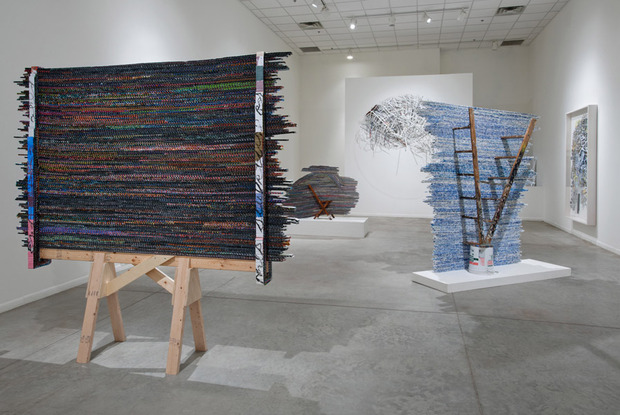
Can you tell me a bit more about the influence of religion in your work?
Growing up in this German Catholic environment—I don’t agree with the policies now, but what I do love about it is the ritual. To me as a kid, the whole Mass thing was high art. It was about the lighting and the gowns and the procession and the crucifixion and the figures and the bloody things [laughs]. It was like, “Wow, this is like theatre!” And it really was like puppet theatre in a lot of ways. You had these carved forms standing in, so when the priest is carrying this bloody crucifix down the aisle, it’s like puppetry.
The other thing I loved about it—I didn’t realize it at the time, but I discovered it much later—is the fact that in Christian religions, at least in the US, is the fact that the eucharist is seen as symbol for the Last Supper. But for Catholics, they tend to actually believe that there is a physical transformation from bread to a piece of flesh. That moment is called the transubstantiation. As a child I couldn’t get my head around it. This entire room of people, of adults, who are seeing that and believing it became my first sort of art experience. You’re seeing something being transformed into something else. There’s this whole audience of people, it’s like they have to bring some intense will to this to see it. Because for a group of grown people to sit down and watch a piece of wood speak to them about something about their lives, that’s crazy. You have to project. You have to give up all kinds of understanding of the real world and project yourself onto this thing.
That was what that was for me as a kid: This whole audience is believing in something outlandish, it’s crazy but it was there. There’s something really powerful about what this person can do with this “dead” object, this stupid thing, this ritual. So that had a profound influence on art for me—that you can take something as stupid as a bottle of ink and completely transform that bottle of ink into this thing that has huge connotations and experience.
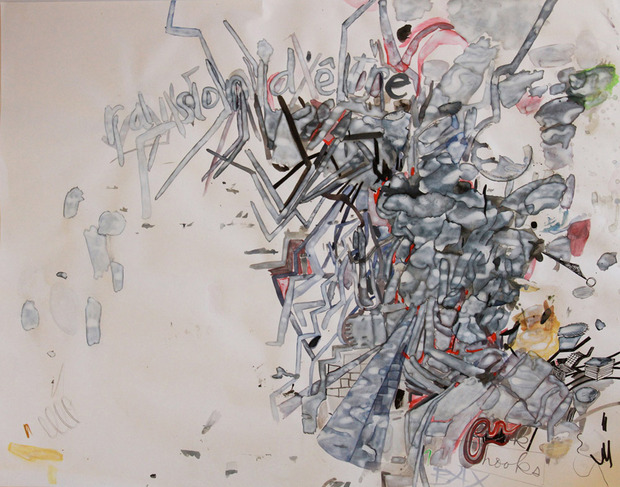
From a visual standpoint there’s a real organic chaos, in the way that nature is very chaotic but at the same time organized, operating with a larger system in mind.
Oh my god, yes. Exactly [laughs]. All of the drawings are pieces of paper that I set down on tabletops in my studio. Over months, I just let those collect drops and spills completely randomly. Then I go back in and organize them by drawing.
I was in this tornado when I was about seven years old. There was this tornado coming and we had these drills where we’d go down in the basement. My brother and I looked out a window in our garage and saw this amazing black, huge tornado just sweeping by obliterating the next neighborhood. It was one of those moments that changed my life, I think. I couldn’t believe the awesome beauty and power of this thing. I thought, “This is the most beautiful thing I’ve ever seen.” Then at the bottom of it, I could houses being destroyed and there was this conflict of beauty and destruction.
One of the neighbors’ houses that was hit was my cousin’s. I drove through that neighborhood later and it was just strewn chaos. And again, it was this beautiful array of colors and shapes and objects, but it was all made out of peoples’ destroyed lives. It was this dual thing about beauty and terror and sort of organized chaos. There seemed to be something designed about it, which I still hold onto. Everything in my work starts out in a kind of random fashion; whether it’s collecting stains or pasting things together in a way that I set up systems where choices don’t have to be made, they just sort of fall together.
Mark Fox’s “MFKPMQ” opens today, 16 January 2014, and runs until 22 February at NYC’s Robert Miller Gallery.
Portrait by Hans Aschim, all other images courtesy of Mark Fox and Robert Miller Gallery
